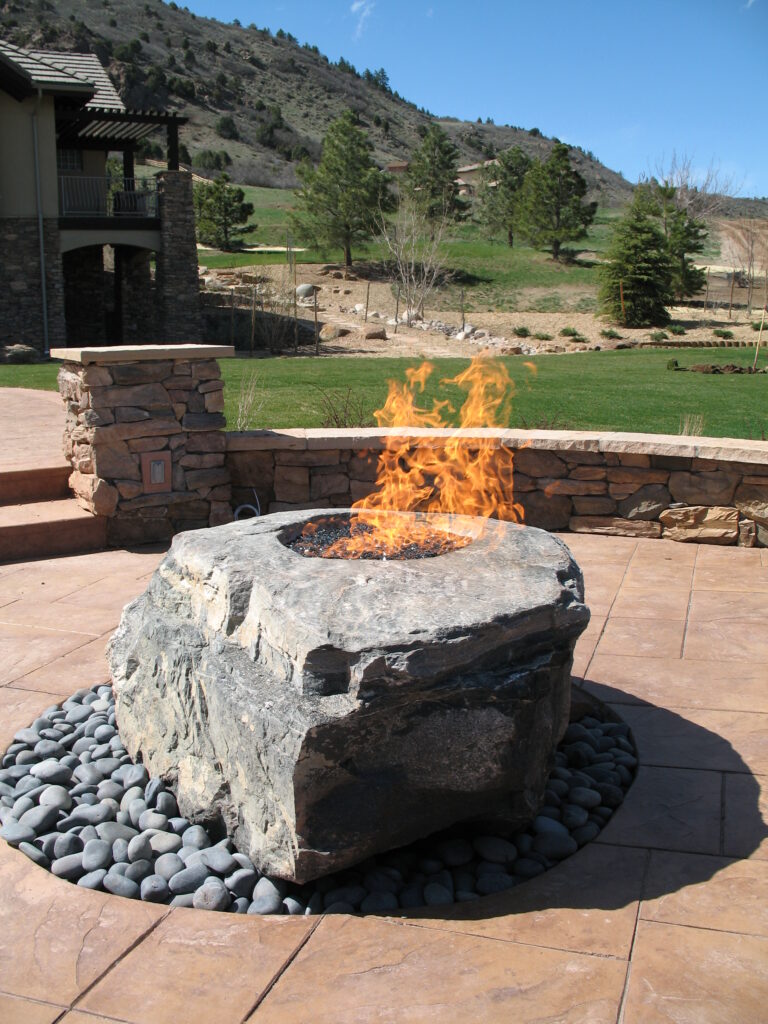The comforting ambiance of a toasty firepit on a cool night is hard to beat. However, what do you do when your reliable gas firepit unexpectedly fails to ignite and heat your outdoor area?
Before you fret and summon a professional, pause to investigate typical problems that might be leading to your gas firepit’s malfunction. In this blog post, we’ll delve into some causes behind your gas firepit’s failure and offer solutions to rectify them.

Gas Supply Issues
Should your gas firepit fail to operate, one of the initial elements to inspect is the gas source. Verify that your propane tank or natural gas line is active. If a propane tank is your fuel source, ensure it is full, connected to the firepit, and in the open position . For those utilizing a natural gas line, ensure the key valve is open, and check for possible leaks in the gas line. Signs of leaks include a rotten egg smell or dead grass along the path of the gas line. If it’s rained a lot recently and your firepit does not have a cover, you may have water in the gas line which a professional can blow out.
Key Valves
For match lit natural gas firepits, key valves regulate the stream of gas entering your firepit and allow you to turn the gas supply on and off. Over time, these can accumulate blockages, leading to an interrupted gas supply. Insert your key into the valve (usually a small, round hole on the side of the firepit) and turn it to open the valve. If you can’t turn the valve or insert the key, it may be blocked.
In Colorado, blockages due to mud wasp nests are particularly common. You can try using a hose or spray bottle with a soapy water solution to spray water into the key valve and soften the nest material so it can be removed. Make sure to keep your face away from the valve when doing this to avoid getting debris in your eyes. You can then use a coat hanger or other small, stiff metal rod to further break up the clog and remove it. Once cleared, spray inside the valve with a bug repellant to prevent the same issue in the future.
Ignition System
If your firepit using an electronic ignition system, it could be causing the issue. Inspect whether the battery is still operational, replacing it if necessary. If the battery is in working order, attempt to clean the igniter’s electrode with a cloth to clear any obstructive debris that might be preventing the spark. Should your firepit still refuse to ignite, it might be time to consider replacing the entire ignition system.
Wind Blockers
Wind can interfere with your firepit’s gas flow and hinder the flames from receiving sufficient oxygen to remain alight. If your firepit is situated in a wind-prone area, try implementing a wind blocker to safeguard the flames from being doused.
Dirty Burners
With time, firepit burners can accumulate dirt, debris, and spider webs. This buildup can obstruct the even flow of gas through the burners, leading to irregular flames or a complete absence of them. To rectify this issue, remove any lava, glass, or media from the top of the firepit and use a soft brush to meticulously clean the burner.
(conclusion): Wrapping Up: Restoring Your Gas Firepit and When to Seek Professional Help
A malfunctioning gas firepit can indeed dampen the mood of your outdoor space. Nevertheless, by recognizing common problems and tackling them before resorting to professional aid, you can often revive your firepit. If you’ve exhausted all the aforementioned solutions and your firepit still refuses to function, it may be time to engage professional help.
That’s where our expertise at The Gas Connection comes into play: we specialize in gas firepit installation and maintenance. We’re here to offer you an effective solution that will restore your gas firepit to perfect working order. Don’t hesitate to reach out to us today for any of your gas firepit installation or maintenance requirements.